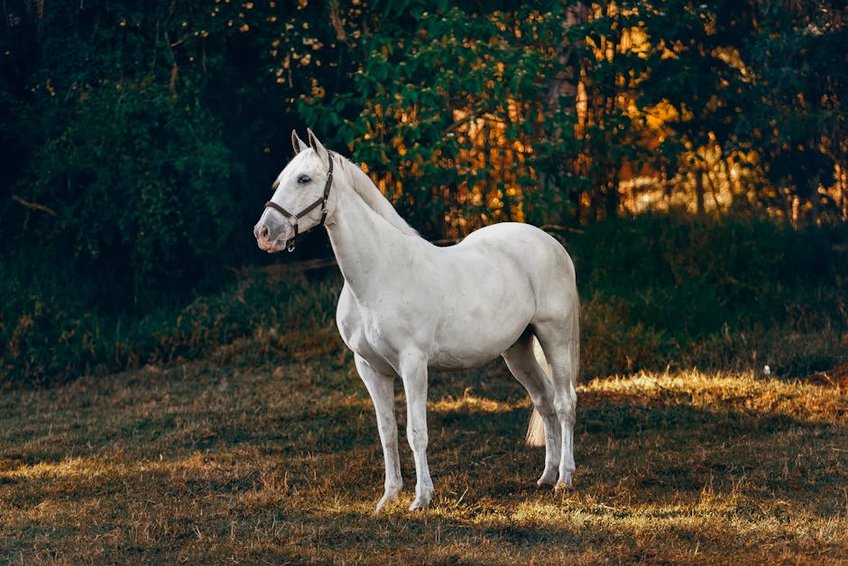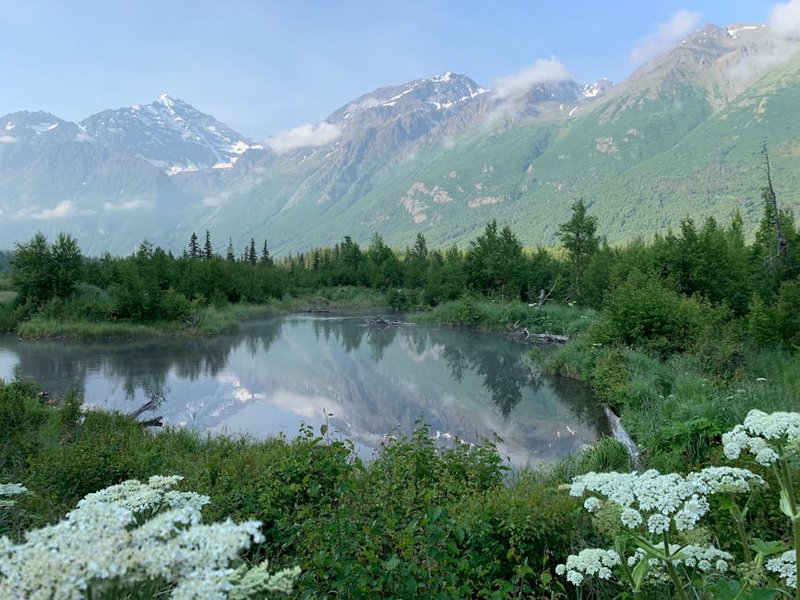Alaska Anchorage Wildlife Center: Discover Arctic Wildlife Up Close
Visiting the Alaska Anchorage Wildlife Center offers an immersive encounter with rescued Arctic animals in their natural habitats just outside Alaska’s largest city. This conservation facility provides safe viewing of brown bears, moose, and bald eagles through elevated walkways and guided educational programs. Your experience combines wildlife photography opportunities with insights into Alaska’s unique ecosystem preservation efforts across 200 acres of pristine landscape.
Essential Alaska Wildlife Information
The Alaska Wildlife Conservation Center spans 200 acres at the head of Turnagain Arm, housing over a dozen native species in large enclosures mimicking natural environments. Established in 1993, this nonprofit organization specializes in rescuing injured and orphaned animals while promoting public education about Arctic wildlife preservation. Their successful wood bison reintroduction program has helped restore this species to Alaska’s wilderness after near extinction.
Operating hours vary seasonally from 9 AM to 6 PM during summer months and 10 AM to 5 PM in winter, with extended evening viewing during aurora season. Admission costs $17 for adults and $13 for children ages 4-17, while seniors and military personnel receive discounted rates. Advance online ticket reservations secure your preferred time slot during peak visitation periods from June through August.
What You Need to Know Before Visiting
Prepare for your Arctic animal encounter with these essential details.
- Dress in waterproof layers with temperatures ranging 45-65°F (7-18°C) summer and 15-30°F (-9 to -1°C) winter, plus sturdy walking shoes for the 1.5-mile loop trail.
- Bring binoculars and telephoto lenses for optimal wildlife photography from safe distances, with bear viewing platforms offering 300-foot sightlines.
- Check daily animal activity schedules online showing feeding times between 11 AM-3 PM when species like moose and caribou are most active and visible.
- Budget travelers spend $50-75 per person using public transportation from Anchorage ($25 roundtrip), self-guided touring, and packed lunches with basic admission at $17 adult rate.
- Mid-range visitors invest $100-150 including rental car from Anchorage ($60 daily), guided bear tour ($35), and casual dining at onsite café with combination ticket packages.
- Luxury experiences cost $200+ featuring private guided tours ($125), photography workshops ($75), and premium lodging at nearby Alyeska Resort with roundtrip helicopter transfers.
- Alaska Wildlife Conservation Center Official Site
- Travel Alaska Tourism Information
- Alaska Department of Fish and Game
Key Conservation Mission Details
This facility operates as a 501(c)(3) nonprofit organization with all admission fees directly funding animal care and conservation initiatives. Their wildlife rehabilitation program successfully releases approximately 40% of rescued animals back into native habitats after recovery. Permanent residents include brown bears with previous human conflict histories and species unsuitable for wild reintroduction due to injury imprinting.
Educational programs serve over 50,000 students annually through school field trips and virtual learning sessions about Arctic ecology. The center partners with Alaska Department of Fish and Game on species recovery projects including the wood bison program that reintroduced 130 animals to the wild. Volunteer opportunities range from habitat maintenance to visitor services with 200+ regular contributors supporting operations.
Historical Development and Growth
Founded by Mike Miller in 1993, the center began with six acres and has expanded through multiple capital campaigns to its current 200-acre footprint. Major infrastructure improvements include the 2018 completion of elevated walkways providing safer viewing angles above predator habitats. Their animal population has grown from initial eight residents to current capacity for 200+ animals across sixteen native Alaskan species.
The facility achieved Association of Zoos and Aquariums accreditation in 2015, recognizing excellence in animal care and conservation education standards. Future expansion plans include additional predator habitats and a dedicated avian conservation center scheduled for 2025 completion. These developments continue enhancing both animal welfare and visitor experience quality.

Alt: “alaska-wildlife-center-brown-bear-habitat-turnagain-arm”
Alaska Anchorage Wildlife Center – Planning Your Trip
Strategic planning ensures you maximize your Alaska Anchorage Wildlife Center experience while accommodating Anchorage’s variable weather conditions. Summer visits between June and August provide optimal animal visibility with 18+ daylight hours, though this coincides with peak tourist crowds. Shoulder seasons in May and September offer smaller groups with potential for northern lights viewing during extended evening hours.
Budget approximately $75-150 per person for a comprehensive visit including transportation, admission, and guided tour options. Rental car availability diminishes during July, so reserve vehicles 2-3 months ahead through Anchorage airport locations. Combination tickets with nearby attractions like Portage Glacier cruises save 15-20% compared to separate purchases.
Physical mobility considerations include wheelchair-accessible pathways covering 80% of the facility with complimentary mobility aid rentals. Service animals face restrictions in predator areas, though the center provides alternative viewing options. Weather contingency plans should account for sudden temperature drops and precipitation even during summer months.
Best Time to Visit Alaska Wildlife Center
Peak season runs June through August when temperatures average 55-65°F (13-18°C) and animal activity peaks during extended daylight hours. These months provide optimal photography conditions with brown bears most active between 10 AM-2 PM daily. Reserve tickets 3-4 weeks in advance as capacity limits frequently sell out during this high-demand period.
Shoulder seasons in May and September offer smaller crowds with temperatures ranging 40-55°F (4-13°C) and potential aurora viewing after 8 PM. Animal visibility remains high though some species begin seasonal behavioral changes. Winter visits from October to April require thermal clothing for 15-30°F (-9 to -1°C) conditions but provide unique opportunities to observe adaptation behaviors.
Budget Planning and Costs
Consider these tiered options for different travel budgets.
Essential Preparation Checklist
Pack waterproof outer layers, insulated boots, and multiple clothing layers for sudden weather shifts common along Turnagain Arm. Camera equipment should include telephoto lenses (200-400mm), polarizing filters, and extra batteries that perform reliably in 40-60°F (4-15°C) conditions. Download offline maps since cellular service becomes unreliable beyond Anchorage city limits.
Secure Alaska travel insurance covering weather-related cancellations and medical evacuation given the remote location 47 miles from Anchorage hospitals. Make restaurant reservations in Girdwood for post-visit meals since dining options near the center remain limited. Verify rental car agreements include unlimited mileage and roadside assistance for the Seward Highway drive.
Top Wildlife Attractions and Activities
The center’s habitats showcase Alaska’s iconic species through naturalistic enclosures designed by wildlife habitat specialists. Brown bear viewing occurs from elevated platforms providing safe observation of social behaviors and feeding patterns. Moose and caribou roam spacious wooded areas visible from multiple trail perspectives throughout the 1.5-mile loop.
Bird enthusiasts appreciate the avian conservation area featuring bald eagles, great horned owls, and various raptors native to Southcentral Alaska. The musk oxen enclosure demonstrates how these Ice Age survivors thrive in Arctic conditions with their distinctive qiviut wool coats. Interactive elements include keeper talks scheduled daily at 11 AM, 1 PM, and 3 PM discussing animal behaviors and conservation stories.
Must-See Animal Highlights
Brown bear habitats feature multiple viewing angles where visitors observe social dynamics between rescued siblings. These 800-pound predators demonstrate natural foraging behaviors during scheduled feeding sessions. The moose enclosure provides rare close-up views of North America’s largest deer species, particularly during spring calving season.
Wood bison herds represent the center’s most significant conservation success, with animals eventually reintroduced to Alaska’s wilderness. Bald eagle aviaries house non-releasable birds with wingspan displays exceeding seven feet during feeding demonstrations. Caribou migrate between seasonal habitats visible from the main loop trail, especially active during morning hours.
Hidden Gems and Local Favorites
Behind-the-scenes tours (additional $25) access animal care facilities and provide keeper interactions unavailable during regular visits. The seasonal salmon stream observation deck offers underwater viewing windows during spawning runs from mid-July through August. Photography blinds available for reservation provide unobstructed landscape views across Turnagain Arm with mountain backgrounds.
Early morning entry opportunities before public hours grant exclusive access to predator feeding preparations. The volunteer guide program connects visitors with long-term caregivers sharing intimate animal behavior insights. Off-season special events include aurora viewing nights with heated shelter access during winter months.
Wildlife Photography Techniques
Utilize shutter speeds exceeding 1/500th second to freeze animal motion during active feeding periods. Composition strategies should incorporate environmental elements like alpine backgrounds and native vegetation framing. Morning light between 8-10 AM provides optimal illumination angles before midday sun creates harsh shadows.
Telephoto lenses (200-400mm) enable detailed portraits while maintaining safe distances from enclosure barriers. Polarizing filters enhance color saturation particularly for aquatic habitats and sky elements. Patience yields best results as animal behaviors unfold naturally rather than attempting to force interactions.
Practical Travel Information
Transportation options from Anchorage include rental cars, shuttle services, and guided tour packages with pickup from downtown hotels. The Seward Highway drive takes approximately 60 minutes covering 47 scenic miles along Turnagain Arm. Road conditions require vigilance for wildlife crossings and sudden weather changes even during summer months.
Accommodation ranges from luxury resorts in Girdwood to budget-friendly Anchorage hotels with easy highway access. Dining options near the center remain limited to a seasonal café, though Alyeska Resort offers multiple restaurants seven miles away. Advance planning ensures seamless logistics given the remote location and variable Alaskan weather patterns.
| Accommodation Type | Features and Location | Price Range (USD) |
|---|---|---|
| Wilderness Lodges | Private cabins with kitchenettes, guided wildlife tours, complimentary breakfast | $250-400/night |
| Girdwood Hotels | Mountain views, onsite dining, shuttle service to wildlife center | $150-250/night |
| Anchorage Hotels | Downtown location, rental car packages, multiple restaurant options | $100-200/night |
| Vacation Rentals | Full kitchens, multiple bedrooms, private hot tubs, weekly rates | $180-300/night |


